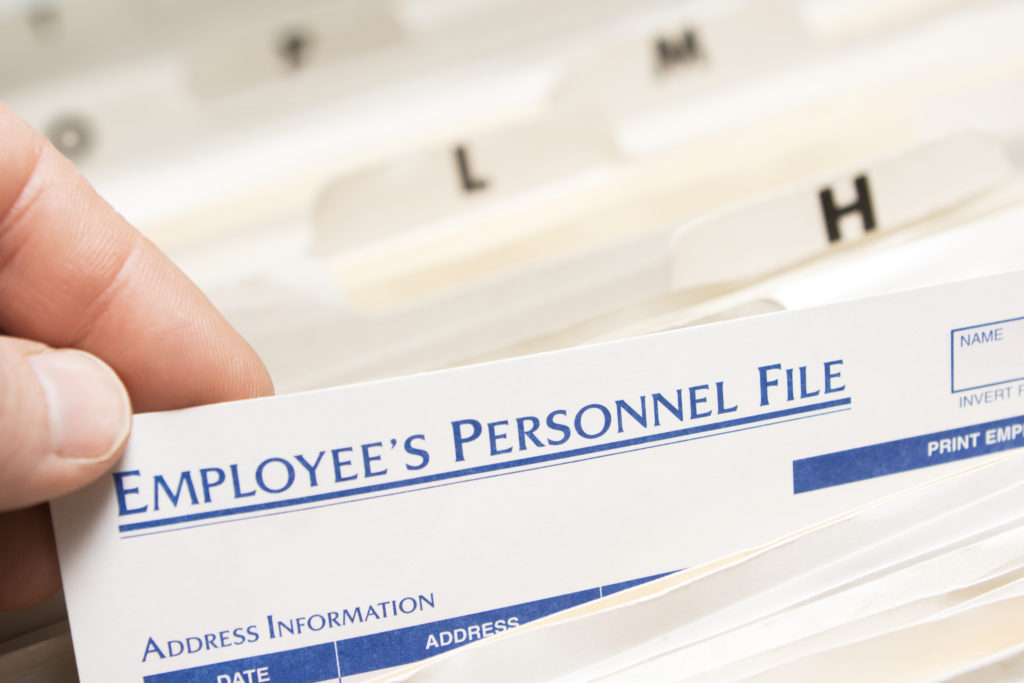News
Maintaining Employee Records
 No matter the industry or profession, all employers grapple with records and paperwork especially as more businesses attempt to be “paperless”. Employers must be diligent with their personnel records and paperwork and how it is maintained since many federal and state laws require that employers keep specific information on their employees.
No matter the industry or profession, all employers grapple with records and paperwork especially as more businesses attempt to be “paperless”. Employers must be diligent with their personnel records and paperwork and how it is maintained since many federal and state laws require that employers keep specific information on their employees.
Employers should maintain personnel files for all employees. In general, an employee’s personnel file should include: 1) documents created at the time of hiring such as applications/resumes, wage compensation information, signed-acknowledgments of the company’s employee handbook or other company policies or procedures, up-to-date job descriptions, and all executed employment, confidentiality and non-competition agreements; 2) documents created during the employment relationship, such as performance reviews, performance improvement plans, written warnings and other disciplinary measures, and pay raises, bonuses or other applicable compensation documents; and 3) documents created at the end of employment such as letters of resignation, notices of termination, documentation of reasons for terminations or layoffs, severance or separation agreements, and documents protecting the employer’s trade secrets and confidential information including written confirmation that the employee has returned all company property upon termination.
Just as certain documents should be included in the employee’s personnel file, certain documents should never be included in a personnel file. For example, any documents likely to reveal genetic information protected by the Genetic Information Act or medical information protected by federal, state or local laws, such as the Americans with Disabilities Act, must be stored in a file separate from the employee’s personnel file and with limited access to the medical file. Such documents may include post-offer health screenings, drug test results, medical records, physicians’ notes, Family and Medical Leave Act documents, requests for accommodation, and insurance claims made by the employee. In addition, any documents identifying the employee as a member of a protected class or relating to any investigation of harassment or discrimination should be stored separately from the personnel file. Finally, background checks should be stored and destroyed in accordance with the Fair Credit Reporting Act and I-9 forms must be retained in accordance with the Immigration Reform and Control Act of 1986.
Almost all of these records can be stored electronically. However, certain laws identify specific requirements for electronic retention of records. For example, employers may store I-9 forms electronically only if the storage system meets certain requirements such as controls to detect and prevent the unauthorized or accidental creation, alteration, or deletion of electronically completed forms. COBRA and OSHA records are also subject to specific system requirements. In storing records electronically, it is important that personnel records and records that may contain medical or other protected information are stored in separate electronic files with safeguards for accessing the protected information.
Just like the electronic storage of records, there is no single answer on how long an employer must keep records as the length of time will vary depending on the type of record. For example, the Equal Employment Opportunity Commission requires covered, private employers to store personnel records for one year from the date of making the record or the personnel action involved, whichever occurs later, or in the case of involuntary termination of an employee, for one year from the date of termination. While OSHA, the Immigration Reform and Control Act, and the FLSA have longer retention requirements. Some state laws also specify the length of retention for specific documents.
Keeping updated and accurate personnel records in the proper format plays an important role in shielding employers from liability.
Please feel free to contact us with any questions or suggestions for future blog posts. Click here to subscribe to our blog “Shielding Employers from Liability: Tips for Maintaining Your Armor”.

